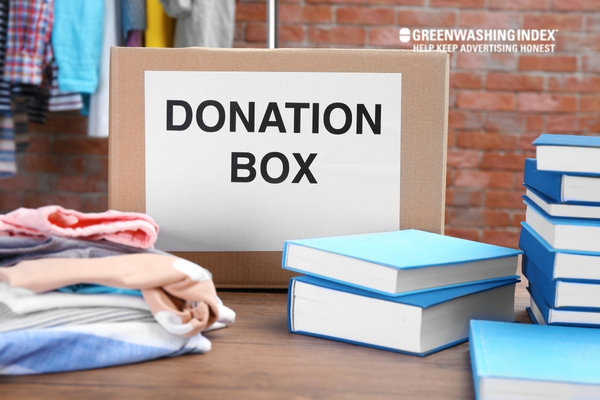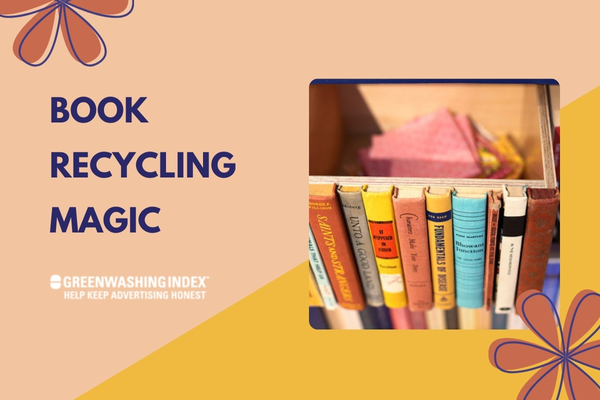Have you ever wondered what to do with all those old books gathering dust on your shelf? Book recycling is not just about being kind to our planet; it’s a gateway to unlimited creativity! Picture this: Your favorite story turned into a piece of art or an ancient textbook rebirthed as a quirky planter. The journey from worn-out pages to vibrant new creations begins right here.
What if I told you that those stacks of worn paperbacks and dog-eared novels taking up space in your home could be the spark for something amazing? With some simple and enjoyable ideas, you can transform them into unique items. These old reads can serve fresh purposes, cutting down waste and giving extra joy in unexpected forms. You don’t need magic—just a bit of innovative thinking!
Book Recycling: Getting Creative with Old Reads
When we hold on to a well-loved book, it’s like holding onto a small piece of history. But what happens when we run out of room on our shelves or the pages grow old and worn? That’s where book recycling comes in.

Embrace the World of Book Recycling
Let me tell you about book recycling and why it’s something we should all think about. When I say book recycling, I mean finding new ways to use old books that we can’t read anymore. Maybe they are torn, or perhaps we’ve just outgrown them. Now, instead of throwing them away, there are smarter choices we can make.
Why bother with book recycling? First off, it helps our planet. Lots of trees are cut down to make paper for books. When we recycle books, we use less new paper and save these trees. It’s a part of being friendly to the environment or what some folks call sustainable reading. It also means fewer books end up in landfills where they take up space and can harm the earth as they slowly break down.
Another big plus is that it clears up space at home. Instead of having piles of old books collecting dust on shelves or in boxes, you can turn them into something cool or give them a new life elsewhere.
The Life Cycle of a Once-Loved Read
Imagine an old book’s journey—it starts with someone loving it and reading it over and over again until one day, it’s not needed anymore. That’s where innovative recycling ideas jump into action.
An old read doesn’t have to be the end; it could be just the start! For instance:
- If its pages are just lightly worn, another person could love reading that book next.
- If it’s not in good shape for another reader but still looks kind of okay outside, maybe a library could use it as a decoration.
- In case those options don’t work out because the book is too hurt from love and time, then comes the chance for some magic—you can change this little old thing into all kinds of neat crafts!
This is what makes upcycling old books so much fun—turning an item far past its prime back into treasure once again by giving it a completely new purpose! This journey brings together creativity and caring for our world under one umbrella—a colorful mix that brings out smiles while also being kind to our planet!
Also Read: Metal Recycling: Your Guide to Sustainable Disposal
How to Recycle Books?
Recycling books is not just about being good for our planet. It’s about sharing stories, helping others, and finding new ways to enjoy old favorites. When we talk about book recycling, it doesn’t mean breaking them down for paper. It can also mean creative reuse of books that gives them new life and purpose.
1. Rethinking Your Bookshelf: Donate Your Books
Imagine giving your books a second chance at telling their tales. When you donate your books, you share the joy of reading with someone else. It’s like handing over a piece of treasure to another person who might find their next favorite story among your old reads.
- Donate to libraries: Libraries often welcome donations to expand their collections or stock up for sale.
- Give to schools: Teachers can use books in classrooms for students to enjoy.
- Share with shelters: Help people in tough spots find an escape through stories.
- Offer to literacy programs: Support initiatives that teach adults and kids how to read.
- Check with local hospitals: Patients can use a good book during recovery periods.
Donating not only clears out space on your own bookshelf but also brings warmth into the lives of others.
2. Circulate Literacy: Trade Books with Others
Trading lets you recycle your read but still leaves you with something new (to you) in return! It’s eco-friendly because no new resources are needed—just the love of reading passing from one person to another.
Here’s how:
- Sign up on book trading websites like BookMooch or Paperbackswap.
- Join local community groups dedicated to book swaps.
- Participate in social media groups where members post books they’d like to trade.
By trading, we keep stories moving and contribute sustainably by saving trees and reducing waste.
Also Read: Ink Cartridge Recycling: Your Ultimate Green Guide
3. Uncluttering & Earning: Sell Your Old Books Online and Offline
Selling helps clear out space while offering others a chance at affordable reading material—and puts some extra cash in your wallet!
Here’s where you can sell:
Offline:
- Local used-book stores: They usually accept popular titles or classics for reselling or credit toward their inventory.
Online:
- Amazon: List under their used books section; perfect for textbooks or rare finds!
- eBay: Ideal for collectors’ items or batches of books—think series sets!
- Facebook Marketplace: This is a great local option without shipping hassles; snap a photo, set a price, and be done!
Remember, when selling:
- Check condition – No tears or marks
- Compare prices – Know what others charge
- Be honest – Describe accurately
We each have the power through simple actions like these—to encourage sustainable reading habits that respect our world while nurturing our minds and souls!
4. Beyond the Shelf Life: Repurpose Books into Art Projects
Have you ever thought about turning a book that’s just sitting there on your shelf into something brand new? Well, book recycling is not just about getting rid of old books; it’s also about giving them a second life as something beautiful or useful. Let’s dive into how you can creatively use books in art projects:
- Wall Art: You can cut out pages or even whole covers and frame them to make interesting wall art. Imagine a series of framed book pages in different languages decorating your living room.
- Sculptures: Some artists stack books in certain ways to create sculptures. It might be a tower, an animal, or any shape that comes to mind.
- Furniture: Yep, you read it right! Books can be stacked and glued together to make a stool or side table. Just add a cushion or glass top, and there you have it – functional furniture.
Each idea keeps your old reads from being thrown away and turns them into charming décor pieces for your home. And the best part? They tell a story beyond the written words inside.
Also Read: CRT Monitors Recycling Guide: Save Earth, Start Today!
5. Understanding Your Local Curbside Recycling Programs
Recycling rules differ from one place to another, which makes understanding your local curbside program really important before tossing books in the recycle bin:
- Learn what’s accepted: Not all programs take hardcover books because of the glue in the binding.
- Prep Your Books: If they do accept them, sometimes you need to remove covers on hardcover books before recycling.
- Paperbacks are easier: Usually, these are fine as they are because they don’t have hard covers or strong binding glue.
By knowing these rules, you’ll make sure that your books are recycled properly without causing trouble at the recycling center.
6. Find a Professional Book Recycler Near You
When my usual recycler doesn’t take books, I look for someone who specializes in book materials:
- Search online for “professional book recyclers near me.”
- Check with local libraries – they might know recyclers for donated books.
- Reach out to used bookstores; some may have recycling contacts.
These specialized recyclers often know exactly how to manage old books, so they’re handled in an eco-friendly way without wasting any materials that can be saved by upcycling old books into new treasures!
Also Read: Computer Recycling: Green Guide to Old Tech Disposal
Kindling Generosity Through Book Donations
One thing I often think about is what to do with old books that are just sitting on my shelf, collecting dust. And here’s a thought that brings a smile to my face – book donations. This kind of book recycling isn’t just about being tidy; it’s also about sharing stories and knowledge with others who might not have easy access to books.

When I look into the process of donating books, I see how simple acts can spark big changes in someone else’s life. Here’s what I usually do:
- Find Books to Donate:
First, I go through my collection and pick out books that I no longer read or need. These can be novels I loved, textbooks from courses long finished, or children’s stories my family has outgrown. - Check Their Condition:
It’s important that the books are in good shape so they can bring joy to others and won’t fall apart when someone is halfway through the story! So, if they’re torn or have pages missing, they’re probably not right for donating. - Research Local Libraries or Schools:
Many libraries and schools welcome donations because these places believe in sustainable reading. They use these gifted books either to expand their collection or pass them on to students and visitors. - Consider Charities:
There are many charities out there that give away your donated items for a good cause – education! They often have specific areas of need, like children’s literature or educational materials. - Local Thrift Stores:
Ever walk into a thrift shop and see shelves full of pre-loved books? That could be the new home for your old reads! These stores often support local community programs, too. - International Programs:
If feeling particularly adventurous, you could even send books abroad through international programs that focus on building libraries in underdeveloped communities. - Reach Out Online:
Sometimes, an online post can find new readers craving your old favorites—places like social media groups dedicated to book exchanges act like matchmakers for book lovers! - Friends & Family Circle:
Never forget your own network where cousins might cherish what you once adored; friends may find meaning where you found escape.
Remember, though, it’s not just handing over a bunch of used paperbacks — when you donate a book, you pass along knowledge, perhaps an adventure, certainly a physical piece of yourself that held feelings and thoughts as its pages turned in your hands once upon a time.
To me, book recycling by way of donations is more than eco-friendly – it’s about lighting up minds while taking care of our planet.
FAQs
Can hardcover books be included in curbside recycling plans?
No, most curbside recycling programs don’t take hardcover books because of the glue and binding. It’s best to remove the cover and recycle only the pages if allowed.
How do you dispose of outdated reference materials like encyclopedias?
To dispose of old encyclopedias, consider donating them, using them in creative reuse projects, or contacting a recycling center that accepts mixed paper products.
Are there any valuable vintage books I might want to sell instead of recycling?
Yes! Always check to see if your book is a collector’s item. Vintage or rare books could be worth selling rather than recycling — try a used bookstore or an online marketplace.
Conclusion
As I’ve explored, book recycling offers a world full of possibilities. It’s not just about being kind to our planet, but it’s also about sharing stories and sparking creativity. Through donating, trading, selling, or even repurposing old reads into art, every one of us can contribute to sustainable reading practices that benefit our communities and environment.
Next time you eye that dusty shelf with books you no longer read, remember the opportunities for their next chapter – a journey from your hands to furthering someone else’s imagination or becoming a part of something new through eco-friendly book projects.



